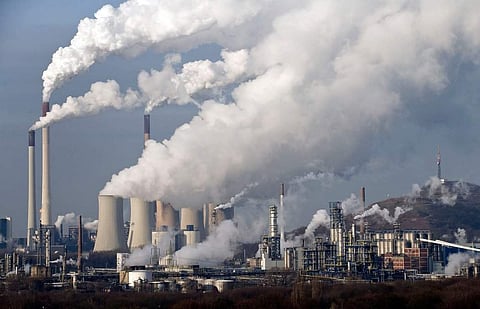

WASHINGTON: An international ban on chlorine-containing man-made chemicals called chlorofluorocarbons (CFCs), has resulted in about 20 per cent less ozone depletion, NASA said.
CFCs are long-lived chemical compounds that eventually rise into the stratosphere, where they are broken apart by the Sun's ultraviolet radiation, releasing chlorine atoms that go on to destroy ozone molecules.
Stratospheric ozone protects life on the planet by absorbing potentially harmful ultraviolet radiation that can cause skin cancer and cataracts, suppress immune systems and damage plant life.
"We see very clearly that chlorine from CFCs is going down in the ozone hole, and that less ozone depletion is occurring because of it," said Susan Strahan, from the US space agency.
By comparing the Microwave Limb Sounder (MLS) measurements of hydrochloric acid and nitrous oxide each year, the scientists determined that the total chlorine levels were declining on average by about 0.8 per cent annually.
The Antarctic ozone hole forms during September in the Southern Hemisphere's winter as the returning sun's rays catalyse ozone destruction cycles involving chlorine and bromine that come primarily from CFCs.
To determine how ozone and other chemicals have changed year to year, scientists used data from the MLS aboard the Aura satellite, which has been making measurements continuously around the globe since mid-2004.
The change in ozone levels above Antarctica from the beginning to the end of southern winter - early July to mid- September - was computed daily from MLS measurements every year from 2005 to 2016.
The scientists found that ozone loss is decreasing, but they needed to know whether a decrease in CFCs was responsible.
When ozone destruction is ongoing, chlorine is found in many molecular forms, most of which are not measured. But after chlorine has destroyed nearly all the available ozone, it reacts instead with methane to form hydrochloric acid, a gas measured by MLS.
According to the study published in the journal Geophysical Research Letters, the Antarctic ozone hole should continue to recover gradually as CFCs leave the atmosphere, but complete recovery will take decades.
"CFCs have lifetimes from 50 to 100 years, so they linger in the atmosphere for a very long time," said Anne Douglass, a fellow atmospheric scientist at Goddard and the study's co- author.
"As far as the ozone hole being gone, we are looking at 2060 or 2080. And even then there might still be a small hole," Douglass said.